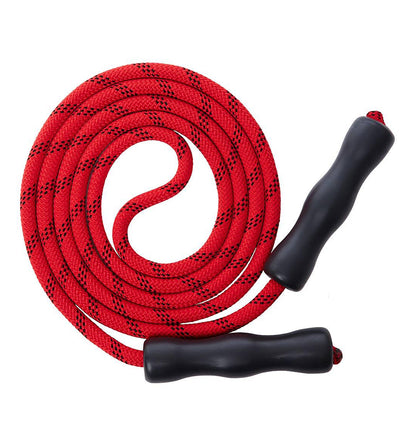5 Simple Ways to Make Your At-Home Workouts More Challenging and Effective

In theory, home workouts should be great. There’s no commuting involved, no wait times for any of the equipment, and arguably fewer distractions.
In practice, for many people, it feels more distracting and less motivating to work out at home. Furthermore, the limited equipment — and often the low maximum available weight — end up limiting the ability of more experienced trainees to train productively.
While dealing with distraction and motivation are subjects for another article, the physical limitations of home workouts can certainly be dealt with.
Here are five simple ways to consistently take your at-home workout to the next level.
Related: These At-Home Tabata Workouts Will Completely Light You Up
1. Incorporate Drop Sets

A drop set is a type of set in which you train to failure or near failure, and then immediately do another, slightly easier set targeting the same muscle group. In some cases, you may do this three or four times, powerfully post-fatiguing the targeted muscles.
There are two styles of drop set: traditional and mechanical advantage drop sets.
Traditional drop sets are better known and simpler in concept. Once you do as many sets as you can of a given exercise, you reduce the weight and do another set of the same exercise.
In the gym, this is commonly done with machines or multiple sets of dumbbells. At home, most people don’t have a full set of heavy dumbbells, and adjustable-weight dumbbells can take too long to change the weights on.
Instead, the best option for doing these at home is to use resistance bands. You could, for instance, perform a set of pull-ups, followed by another set using a Spartan strength band to assist yourself.
As for mechanical advantage drop sets, those consist of stringing together two to four exercises that utilize the same muscles, in ascending order of how much weight you can use with a given exercise. For instance, you could do pull-ups followed by chin-ups, or leg raises followed by dumbbell shoulder presses. The same weight is generally used for all exercises in the sequence.
In some cases, you can combine both types of drop set. For instance, you could do pull-ups, then chin-ups, then pull-ups assisted by a resistance band, then chin-ups assisted by a resistance band.
2. Work From a Deficit

No, that doesn’t mean busting your budget. To train from a deficit is to elevate your feet — or your hands, with exercises like push-ups where your hands are on the floor — so that the range of motion of an exercise can be extended slightly below the normal “bottom” of the movement.
This is not necessary with all exercises, but some exercises benefit from a deficit in order to better match the full range of motion of the muscles involved.
With push-ups, for instance, your face touching the floor forces an endpoint to the movement, when your chest, shoulders, and triceps actually have a few more inches to their useful range of motion. By elevating your hands on a pair of small foam or plastic blocks, you can extend the bottom of the push-up’s range a few more inches. This helps work the chest in particular, which is most fully engaged near the bottom of a push-up.
Related: How to Build Muscle and Lose Fat with Body Recomposition
3. Do Agonist-Antagonist Supersets

Most of the skeletal muscles in the human body are arranges in antagonistic pairs— that is, pairs that move a body part in the opposite direction. Your bicep, for instance, bends your arm, while your triceps straighten it.
Because your muscles somewhat work against each other, you can increase your power output for a given exercise by pre-fatiguing the antagonist muscle. This would be accomplished by performing a superset of two exercises that move the same body part in opposite directions — bench press and rows, for instance, or pull-ups and shoulder presses.
Studies show that agonist-antagonist supersets provide a greater return per unit of time spent in the gym — or your home gym, as the case may be — compared to traditional sets. Other studies have found that it matters which order you do the two exercises in. For example, bench press before rows works better than rows before bench press.
In general, it seems that the more fast-twitch-dominant muscle should be trained first. For most upper body supersets, this will mean doing the pushing movement (chest, triceps) before the pulling movement (triceps, back). For the lower body, it will mean training the hamstring-dominant movement before the more quadriceps-dominant movement.
4. Move During Your Rest Periods

Active recovery doesn’t get talked about much, but quite a few studies show that staying at least somewhat active while recovering from exercise provides better results than total inactivity.
A systematic research review found that trainees actually had more power, and in some cases less perceived exertion, when they stayed active in between sets. In practice, this usually means doing some light calisthenics, such as using a jump rope, between sets.
The same principle applies in between workouts. You should try to get more light activity, such as going for walks or working while standing up. If you work from home or otherwise can’t get out much, you should make an extra effort to do this.
Related: Active Recovery: An Essential Workout
5. Perform Paused Reps

One final way to get around the limitations of only having lighter weights —or limited equipment — available at home is to perform paused reps.
Simply put, this means pausing for a second or two at the hardest part of the movement, such as the bottom of a squat or push-up, or the top of a chin-up.
This technique works great for home workouts because when the weights are too light, the easier portion of an exercise can be so easy that it almost feels restful. By focusing on the hardest part, you’re able to compensate for using a lighter weight.
This technique can effectively be combined with drop sets by performing paused reps until near failure, and then switching to un-paused reps.

















